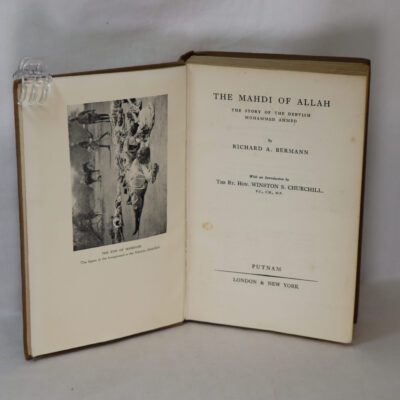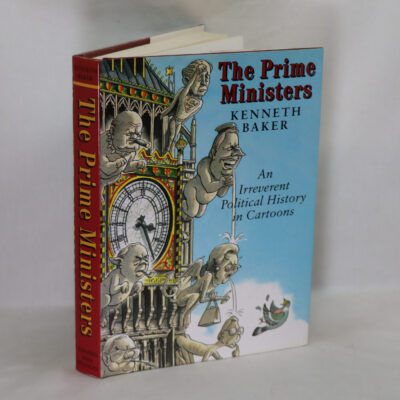The Federalist.
By Alexander Hamilton, James Madison & John Jay
ISBN: 9780451619075
Printed: 2000
Publisher: Palladium Press. Alabama
| Dimensions | 13 × 19 × 5 cm |
|---|---|
| Language |
Language: English
Size (cminches): 13 x 19 x 5
Condition: Fine (See explanation of ratings)
Your items
Item information
Description
Green calf binding with gilt banding, decoration and title on the spine. Gilt emblem on the front board. All edges gilt.
-
F.B.A. provides an in-depth photographic presentation of this item to stimulate your feeling and touch. More traditional book descriptions are immediately available.
A private Printing for members of the Library of American Freedoms. From the original text. Introduction by Wayne LaPierre. An Introduction by Edward Mead Earle. Green leather Binding with gilt to boards and text block. Raised bands on the spine. As New condition, and a beautiful reprint of the original for any Constitutional scholar, history enthusiast or for someone who wants to better understand the Constitution.
Page one of Jacob Shallus’ officially engrossed copy of the Constitution signed in Philadelphia by delegates of the Constitutional Convention in 1787
The Constitution of the United States is the supreme law of the United States of America. It superseded the Articles of Confederation, the nation’s first constitution, in 1789. Originally comprising seven articles, it delineates the national frame and constraints of government. The Constitution’s first three articles embody the doctrine of the separation of powers, whereby the federal government is divided into three branches: the legislative, consisting of the bicameral Congress (Article I); the executive, consisting of the president and subordinate officers (Article II); and the judicial, consisting of the Supreme Court and other federal courts (Article III). Article IV, Article V, and Article VI embody concepts of federalism, describing the rights and responsibilities of state governments, the states in relationship to the federal government, and the shared process of constitutional amendment. Article VII establishes the procedure subsequently used by the 13 states to ratify it. The Constitution of the United States is the oldest and longest-standing written and codified national constitution in force in the world today.
The drafting of the Constitution, often referred to as its framing, was completed at the Constitutional Convention, which assembled at Independence Hall in Philadelphia between May 25 and September 17, 1787. Delegates to the convention were chosen by the state legislatures of 12 of the 13 original states; Rhode Island refused to send delegates. The convention’s initial mandate was limited to amending the Articles of Confederation, which had proven highly ineffective in meeting the young nation’s needs. Almost immediately, however, delegates began considering measures to replace the Articles. The first proposal discussed, introduced by delegates from Virginia, called for a bicameral (two-house) Congress that was to be elected on a proportional basis based on state population, an elected chief executive, and an appointed judicial branch. An alternative to the Virginia Plan, known as the New Jersey Plan, also called for an elected executive but retained the legislative structure created by the Articles, a unicameral Congress where all states had one vote.
On June 19, 1787, delegates rejected the New Jersey Plan with three states voting in favor, seven against, and one divided. The plan’s defeat led to a series of compromises centering primarily on two issues: slavery and proportional representation. The first of these pitted Northern states, where slavery was slowly being abolished, against Southern states, whose agricultural economies depended on slave labor. The issue of proportional representation was of similar concern to less populous states, which under the Articles had the same power as larger states. To satisfy interests in the South, particularly in Georgia and South Carolina, the delegates agreed to protect the slave trade, that is, the importation of slaves, for 20 years. Slavery was protected further by allowing states to count three-fifths of their slaves as part of their populations, for the purpose of representation in the federal government, and by requiring the return of escaped slaves to their owners, even if captured in states where slavery had been abolished. Finally, the delegates adopted the Connecticut Compromise, which proposed a Congress with proportional representation in the lower house and equal representation in the upper house (the Senate) giving each state two senators. While these compromises held the Union together and aided the Constitution’s ratification, slavery continued for six more decades and the less populous states continue to have disproportionate representation in the U.S. Senate and Electoral College.
Since the Constitution was ratified in 1789, it has been amended 27 times. The first ten amendments, known collectively as the Bill of Rights, offer specific protections of individual liberty and justice and place restrictions on the powers of government within the U.S. states. The majority of the 17 later amendments expand individual civil rights protections. Others address issues related to federal authority or modify government processes and procedures. Amendments to the United States Constitution, unlike ones made to many constitutions worldwide, are appended to the document. The original U.S. ‘The Constitution’ was handwritten on five pages of parchment by Jacob Shallus. The first permanent constitution, it is interpreted, supplemented, and implemented by a large body of federal constitutional law and has influenced the constitutions of other nations.
Want to know more about this item?

Share this Page with a friend











